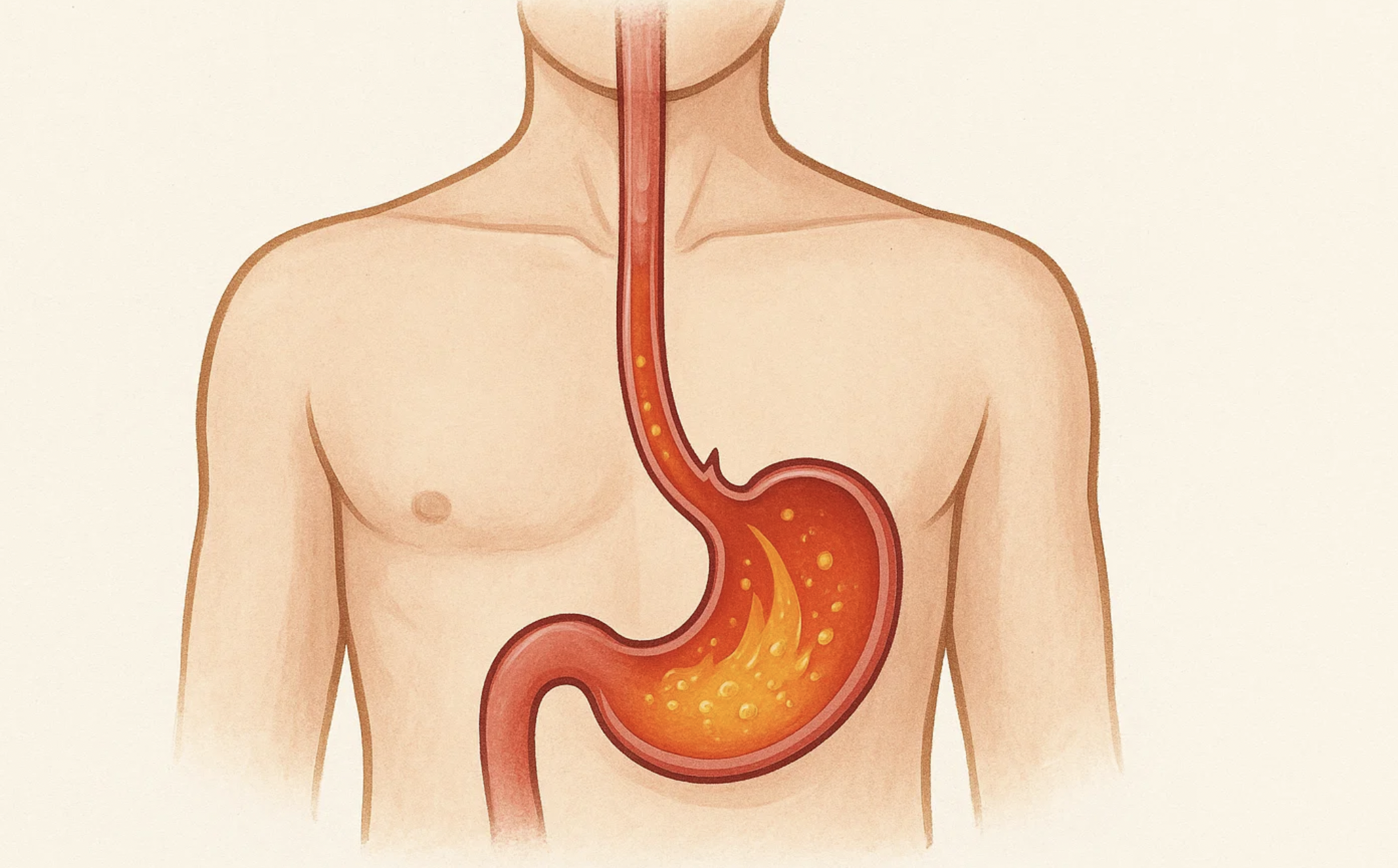New Non-Endoscopic Diagnostic Methods for Acid Reflux in 2025
New Non-Endoscopic Diagnostic Methods for Acid Reflux in 2025
Burning in the chest after eating, a sour taste rising into the throat and the constant urge to clear your throat, if these sound familiar, you might be struggling with acid reflux. But for many, diagnosis is delayed due to fear of endoscopy. The good news is, in 2025, new-generation diagnostic methods now offer more comfortable and non-invasive solutions for acid reflux, with no endoscopy required.

What Is Acid Reflux?
Acid reflux, also known as gastroesophageal reflux disease (GERD), occurs when stomach acid flows backward into the esophagus. This leads to symptoms like chest burning, bitter taste, burping and even hoarseness.
If left untreated, chronic reflux can cause serious complications such as esophageal ulcers, inflammation and in rare cases, cancer.
Is Endoscopy Always Necessary?
Traditional reflux diagnosis often requires endoscopy, a procedure where a tube with a camera is inserted into the esophagus. But many people avoid it due to discomfort, cost or fear. Fortunately, as of 2025, reflux can now be diagnosed using non-invasive and patient-friendly methods.
3 New Diagnostic Tools for Reflux in 2025
1. Saliva-Based Pepsin Test
This test detects pepsin, a digestive enzyme normally found only in the stomach. If pepsin is present in saliva, it indicates acid has traveled up into the throat confirming reflux.
-
Sample taken on an empty stomach
-
No needles, tubes or devices
-
5-minute collection time
-
85% accuracy
-
Can be done at home
A 2024 study in the Journal of Gastrointestinal Disorders found a 88% correlation between this test and standard reflux diagnosis.
2. Wearable pH Sensor Patch
This tiny acid-monitoring sensor is placed on the chest and records acid levels for 24 hours. It detects reflux episodes while you go about your normal day.
-
No endoscopy required
-
Measures frequency and duration of acid episodes
-
Comfortable and non-invasive
-
Results are analyzed with AI support
This method is especially useful in patients with reflux symptoms but no visible findings on endoscopy.
3. Impedance-pH Testing (Now Without Nasal Tubes)
Previously performed with a nasal catheter, this test can now be done using a swallowable capsule. It measures liquid movement and acid presence between the stomach and esophagus.
-
Capsule is safe and non-invasive
-
Detects both acidic and non-acid reflux
-
Does not require endoscopy
According to Mayo Clinic data in 2025, this test shows high accuracy in diagnosing “silent reflux” (laryngopharyngeal reflux), which traditional methods often miss.
Who Can Benefit from These Tests?
You may consider these new diagnostic tools if you:
-
Have frequent heartburn
-
Wake up coughing or choking at night
-
Feel throat irritation or hoarseness
-
Do not improve with standard reflux medication
-
Want a more comfortable alternative to endoscopy
What Happens After Diagnosis?
Once your reflux is confirmed, treatment may include:
-
Lifestyle changes (diet, sleeping position)
-
Acid-suppressing medications
-
Reflux-specific physiotherapy
-
Natural treatment protocols (e.g. zinc carnosine, aloe vera)
-
Surgical options if needed
Endoscopy Is No Longer the Only Option
If you've been avoiding reflux diagnosis due to fear or discomfort, 2025 brings better alternatives. Saliva-based pepsin testing, AI-supported wearable devices and capsule-based pH monitoring now offer accurate and comfortable ways to get diagnosed.
Call to Action
If you have reflux symptoms, don’t delay. Use Medifinder to discover clinics that offer these next-gen diagnostic tools—because comfortable care is finally possible.